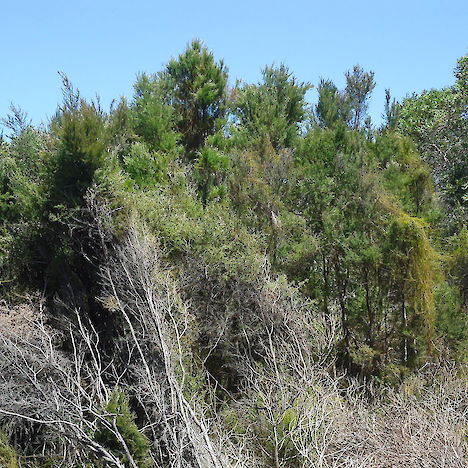Other names:
Kunzea ericoides var. linearis, kānukaThreat category:
Threatened: Nationally Vulnerable?Regions:
Northland, Auckland, Waikato, WellingtonDistribution:
North Island.
Key Features
- Small tree (up to 10 m), with a single trunk. The bark is chocolate brown to grey and has square patterns. The bark often detaches partially at both ends to form long persistant shards.
- This species differs from other species in the K. ericoides complex by its very narrow, fine looking leaves which are covered in long, twisted, silky grey hairs. The flowers are also larger and have more stamens.
Distribution and Habitat
- North Island from Te Paki to northern Waikato with a disjunct population in the Wairarapa.
- Grows on coastal shrublands and cliff faces, usually on sand or sand-derived soils.
Threats
- Habitat modification and loss.
- Hybridism with other Kunzea species is a potential problem near urban settings.
Management Opportunities
- Survey for new locations.
- Mark known sites.
- Protection of habitat.
Monitoring Options
- Check existing populations annually.
- Report new locations to DOC, NZPCN.
References
- New Zealand Plant Conservation Network (NZPCN). http://www.nzpcn.org.nz
- de Lange P.J. (2014). A revision of the New Zealand Kunzea ericoides (Myrtaceae) complex. Phytokeys 40: 1-185.


